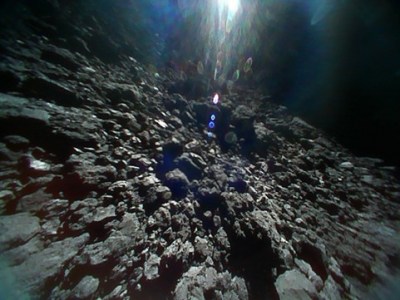Samples taken from the space-returned piece of asteroid Ryugu were collected and prepared under strict anti-contamination controls. Inside the cleanest of clean rooms, a tiny particle was collected from the returned sample with sterilized tools in a nitrogen atmosphere and stored in airtight containers before being embedded in an epoxy block for scanning electron microscopy.
It’s hard to imagine what more one could do, but despite all the precautions taken, the samples were rapidly colonized by terrestrial microorganisms. Only the upper few microns of the sample surface, but it happened. That’s what the images above show.

Obtaining a sample from asteroid Ryugu was a triumph. Could this organic matter have come from the asteroid itself? In a word, no. Researchers have concluded the microorganisms are almost certainly terrestrial bacteria that contaminated the sample during collection, despite the precautions taken.
You can read the study to get all the details, but it seems that microorganisms — our world’s greatest colonizers — can circumvent contamination controls. No surprise, in a way. Every corner of our world is absolutely awash in microbial life. Opening samples on Earth comes with challenges.
As for off-Earth, robots may be doing the exploration but despite NASA assembling landers in clean room environments we may have already inadvertently exported terrestrial microbes to the Moon, and Mars. The search for life to which we are not related is one of science and humanity’s greatest quests, but it seems life found on a space-returned samples will end up looking awfully familiar until we step up our game.











